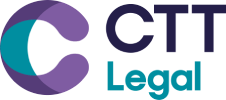March: Will Writer to Estate Planner - Good to Great!
Reminder - If you have attended the Foundation Part 2 previously, you are welcome to only attend session 3.
The course will be consolidated across 3 sessions remotely:
Session 1 – The guide to what ‘commons trusts’ do and don’t do for your clients
Covering: Taxation, protection and flexibility
Including: What do you need to know to interpret a trust for your clients?
• Bare/Absolute Trusts
• Declarations of Trust
• Bereaved Minor/Children’s trusts
• 18 – 25 Trusts
• Life Interest Trusts
• Flexible Life Interest Trusts
• Discretionary Trusts
• Interest In Possession Trusts (IIP)
• Immediate Post Death Interest Trusts (IPDI)
• Asset Protection Trusts
• ‘Life office’ Life Insurance Trusts
Session 2 – The Guide to CTT Group’s trusts and how they can provide client solutions like no others
Covering: Different types of trusts
Including: The Taxation, protection and flexibility benefits of:
- The NRB and RNRB Trusts vs
Bereaved Minor/Children’s trusts
18 – 25 Trusts
Life Interest Trusts
Flexible Life Interest Trusts
Discretionary Trusts
Interest In Possession Trusts
Immediate Post Death Interest Trusts
• Family Business Trust vs ‘Discretionary Trust’
• The Family Probate Preservation Plus Trust (PPPT) vs Asset Protection Trusts (APT)
• The Family Investment Probate Trust vs ‘life office’ Probate trusts
• The Family Life Assurance Trust vs ‘life office’ Life Assurance trusts
• The Family Holdover Gift Trust vs Gift trusts
• Trust of Land vs Declaration of Trust
• How and why is a flexible power of appointment IIP trust so essential in estate planning….
• Life Interest vs Defeasible IIP – why the latter is a crucial estate planning tool
Session 3 – How Assets are Placed in Trusts
Covering: how the assets are transferred is as important as the trust itself
Including:
When is a Trust populated?
- Death Trusts
- Lifetime Trusts
How is a Lifetime trust populated?
- Investments and life policies (deed of assignment)
- Evidential Trusts of Land
- Property/Land – title
What happens following a house being placed into Trust?
- What does it mean to the client
- What sort of interaction with the trustees moving forward might be needed?
- How much protection can a trust really give?
How do the conveyancing documents work?
- Where and why might restrictions only be used as opposed to transferring legal title
- What is the difference and does it dilute the effectiveness of the protection of the trust?
- Probate and lifetime trusts – how do they interact?
- Example and worked explanation of completed legal title
What to expect down the line?
- New First Registration process
- Legacy Software changes for input
- New Products including: Sales and purchases for properties with mortgages
Transferring life policies investments and other assets into trust
- ‘Rysaffe’ planning – what does it mean?
- Further Planning opportunities and considerations
This course can no longer be booked.
Course Session Details
Session 1 – The guide to what ‘commons trusts’ do and don’t do for your clients
Covering: Taxation, protection and flexibility
Including: What do you need to know to interpret a trust for your clients?
• Bare/Absolute Trusts
• Declarations of Trust
• Bereaved Minor/Children’s trusts
• 18 – 25 Trusts
• Life Interest Trusts
• Flexible Life Interest Trusts
• Discretionary Trusts
• Interest In Possession Trusts (IIP)
• Immediate Post Death Interest Trusts (IPDI)
• Asset Protection Trusts
• ‘Life office’ Life Insurance Trusts
Session 2 – The Guide to CTT Group’s trusts and how they can provide client solutions like no others
Covering: Different types of trusts
Including: The Taxation, protection and flexibility benefits of:
- The NRB and RNRB Trusts vs
Bereaved Minor/Children’s trusts
18 – 25 Trusts
Life Interest Trusts
Flexible Life Interest Trusts
Discretionary Trusts
Interest In Possession Trusts
Immediate Post Death Interest Trusts
• Family Business Trust vs ‘Discretionary Trust’
• The Family Probate Preservation Plus Trust (PPPT) vs Asset Protection Trusts (APT)
• The Family Investment Probate Trust vs ‘life office’ Probate trusts
• The Family Life Assurance Trust vs ‘life office’ Life Assurance trusts
• The Family Holdover Gift Trust vs Gift trusts
• Trust of Land vs Declaration of Trust
• How and why is a flexible power of appointment IIP trust so essential in estate planning….
• Life Interest vs Defeasible IIP – why the latter is a crucial estate planning tool
Session 3 – How Assets are Placed in Trusts
Covering: how the assets are transferred is as important as the trust itself
Including:
When is a Trust populated?
- Death Trusts
- Lifetime Trusts
How is a Lifetime trust populated?
- Investments and life policies (deed of assignment)
- Evidential Trusts of Land
- Property/Land – title
What happens following a house being placed into Trust?
- What does it mean to the client
- What sort of interaction with the trustees moving forward might be needed?
- How much protection can a trust really give?
How do the conveyancing documents work?
- Where and why might restrictions only be used as opposed to transferring legal title
- What is the difference and does it dilute the effectiveness of the protection of the trust?
- Probate and lifetime trusts – how do they interact?
- Example and worked explanation of completed legal title
What to expect down the line?
- New First Registration process
- Legacy Software changes for input
- New Products including: Sales and purchases for properties with mortgages
Transferring life policies investments and other assets into trust
- ‘Rysaffe’ planning – what does it mean?
- Further Planning opportunities and considerations






